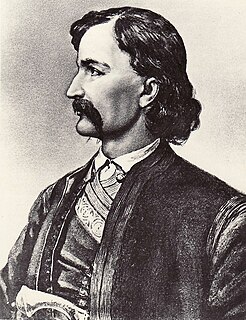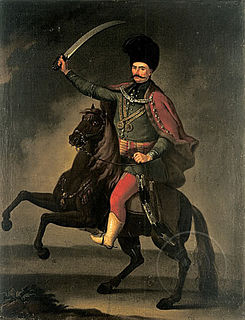 W
WAnđelko Aleksić was a Macedonian Serb Chetnik commander (voivode). He and Đorđe Cvetković led the first two armed bands of the Serbian Chetnik Organization, sent from the Kingdom of Serbia into Ottoman Macedonia to fight for the liberation of Macedonia.
 W
WJovan Ćirković, known as Čifa (Чифа) or Ćirko-paša (Ћирко-паша), was a Serbian teacher, revolutionary (Chetnik) during the Macedonian Struggle, and politician.
 W
WDušan Dimitrijević, known as Vojvoda Dule, was a Serbian Chetnik commander active in Old Serbia during the Macedonian Struggle, also participating in the Balkan Wars and as a regular soldier in the First World War.
 W
WJovan Cvetković, known as Jovan Dolgač, was a Serbian Chetnik commander in Macedonia, who also participated in the Balkan Wars and World War I in the Chetnik detachments of the Serbian Army. In Bulgaria he is considered a Bulgarian renegade who switched sides, i.e. (sic) Serboman.
 W
WSpasa Pavlović, known as Spasa Garda or Zmaj, was a Serbian Chetnik commander in Old Serbia during the Macedonian Struggle (1903–1908). He received his nicknames from his high stature and bravery, and could be entrusted with highly secretive missions. He was born in the village of Stanča near Kriva Palanka, Ottoman Empire. From 1903, he was a jatak for the Serbian bands whom he led the way in the woods and hills, and since 1904 he was a vojvoda (duke) in the Kriva Palanka area. His band defended the Kriva Palanka region from the IMRO, securing the Kriva river, which region was controlled by Serbian bands and where all villages were adhering to the Patriarchate and included in the Serbian Chetnik Organization. Spasa participated in all major battles on the left bank of the Vardar river. There, he helped destroy the local Bulgarian secret organization and Turkish (Ottoman) government. He is famed for his bravery in the battle on Paklište. After the Young Turk Revolution (1908), he returned to his village and lived a peaceful life. However, with the breakout of the First Balkan War, he joined the unit of Vojin Popović-Vuk, as the Serbian vanguard, and participated in all battles from the Serbian border to Prilep. He was wounded but declined medical care. He was killed in action in the fights for Prilep, on November 7, 1912, on the Alinački vis. He was buried in Prilep.
 W
WPetko Ilić was a Serbian Chetnik commander active in Macedonia.
 W
WKrsta Kovačević, known as Krsta Trgoviški, was a Serbian Chetnik commander that was active in Old Serbia and Macedonia during the Macedonian Struggle (1903–08), then participated in the Balkan Wars (1912–13) and World War I (1914–18). In Bulgaria he is considered a Bulgarian renegade who switched sides, i.e. (sic) Serboman.
 W
WMicko Krstić-Porečki, known as Vojvoda Micko, was a Serbian rebel and military leader active in the Poreče region.
 W
WTodor Krstić, known by the nickname Toša (Тоша) and nom de guerre Algunjski (Алгуњски), was a Serbian Chetnik commander in Old Serbia and Macedonia during the Macedonian Struggle. In Bulgaria he is considered a Bulgarian renegade who switched sides, i.e. (sic) Serboman.
 W
WDoksim Mihailović was a Macedonian Serb voivode, originally a teacher, who joined the Serbian Chetnik Organization to fight in Ottoman Macedonia, and then the Balkan Wars. Originally a teacher, he fought against the Ottomans army and later Bulgarian guerrilla bands in the Kosovo Vilayet.
 W
WPavle Mladenović-Jačinski, known as Čiča Pavle and Pavle Jačinski, was a Serbian Chetnik commander active in Macedonia during the Macedonian Struggle.
 W
WPetar Nikolajević, known as Moler, was a Serbian revolutionary, participating in both the First and Second phases, serving as the Prime Minister from 1815 to 1816.
Borko Paštrović was a Serbian Chetnik commander and later a major of artillery in the Serbian Army during the First Balkan War.
 W
WZafir Premčević was a Serbian Chetnik commander in Old Serbia and Macedonia during the Macedonian Struggle, who also participated in the Balkan Wars and World War I.
 W
WRade Radivojević, known as Vojvoda Dušan (Душан), was a Serbian Chetnik vojvoda in Old Serbia and Macedonia during the Macedonian Struggle.
 W
WNikola Rašić, known as Kole Rašić was a Serb revolutionary and guerilla fighter, who led a cheta of 300 men between Niš and Leskovac in Ottoman areas during the Serbian-Turkish Wars (1876–1878). He later became a politician in liberated Niš. He was a merchant by profession, who on his trip to Russia met with Miloš Obrenović and decided to stay in Niš to prepare a future liberation with the help of the Serbian Army. Rašić was one of the founders and organizers of the Niš Committee, established in 1874, with the goal of liberating the Niš Sanjak. His unit joined general Mikhail Chernyayev in 1876.
 W
WĐorđe Ristić, known as Đorđe Skopljanče, was a Serbian Chetnik commander who fought in Old Serbia and Macedonia.
 W
WTrenko Rujanović, known as Vojvoda Trenko, was a Macedonian Serb Chetnik.
 W
WThe Uprising in Banat was a rebellion organized and led by Serbian Orthodox bishop Teodor of Vršac and Sava Temišvarac against the Ottomans in the Eyalet of Temeşvar. The uprising broke out in 1594, in the initial stage of the Long Turkish War, and was fought by local Serbs, numbering some 5,000, who managed to quickly take over several towns in the region before being crushed by the Ottoman army. The relics of Saint Sava were burnt by the Ottomans as a retaliation. Although short-lived, it inspired future rebellions.
 W
WThe Serbian hajduks were brigands and guerrilla fighters (rebels) throughout Ottoman-held Balkans, organized into bands headed by a harambaša, who descended from the mountains and forests and robbed and attacked the Ottomans. They were often aided by foreign powers, the Republic of Venice and Habsburg Monarchy, during greater conflicts.
 W
WGligor Sokolović was one of the supreme commanders of the Serbian Chetnik Movement, that fought the Ottoman Empire, Bulgarian, and Albanian armed bands during the Macedonian Struggle. He was one of the most famous Chetniks, and the foremost in Western Povardarie. In Bulgaria he is considered a Bulgarian renegade who switched sides, i.e. (sic) Serboman.
 W
WStefan Vladislav was the King of Serbia from 1234 to 1243. He was the middle son of Stefan the First-Crowned of the Nemanjić dynasty, who ruled Serbia from 1196 to 1228. Radoslav, the eldest son of Stefan the First-Crowned, was ousted by the Serbian nobility due to increasing Epirote influence through his marriage alliance to Theodore Komnenos Doukas; Vladislav was appointed as his successor. He is celebrated as Saint Vladislav by the Serbian Orthodox Church.
 W
WDanilo "Dane" Stojanović was a Serbian Chetnik commander in Old Serbia and Macedonia (1904–08), who also participated in the Balkan Wars (1912–13). He was also known as Dane Krapče.
 W
WVojislav Tankosić was a Serbian military officer, vojvoda of the Serbian Chetnik Organization, major of the Serbian Army, and member of the Black Hand, who participated in the May Coup and was accused of involvement in the Assassination of Archduke Franz Ferdinand.
 W
WThe Uprising in Banat was a rebellion organized and led by Serbian Orthodox bishop Teodor of Vršac and Sava Temišvarac against the Ottomans in the Eyalet of Temeşvar. The uprising broke out in 1594, in the initial stage of the Long Turkish War, and was fought by local Serbs, numbering some 5,000, who managed to quickly take over several towns in the region before being crushed by the Ottoman army. The relics of Saint Sava were burnt by the Ottomans as a retaliation. Although short-lived, it inspired future rebellions.
 W
WBogić Vučković Stratimirović was a rebel leader in the Sanjak of Herzegovina who organized an uprising in 1737, during the Austro-Russian–Turkish War (1735–39). He was from the Trebinje hinterland, in Herzegovina, the son of Vučko Petrović and grandson of Petar Stratimirović. Early on, he moved to the Kingdom of Serbia (1718–39). He is mentioned in documents as a merchant from Kragujevac. He bought an attestation from the Republic of Ragusa that he descended from Stracimir Balšić, the Lord of Zeta, then appeared in autumn 1737 at the Habsburg deputy commander's office in Sremski Karlovci, with Aleksa Milišević, presenting themselves as nobility and Vučković stressed that he had readied the Montenegrin peoples to help the Austrian Emperor. Vučković and his brothers organized an uprising in Herzegovina in 1737 during Austrian-Turkish conflicts in the Balkans, at the same time helping the Austrians. After the Capture of Belgrade (1739), for their efforts, he and his brothers were awarded Austrian noble titles and granted the village of Kulpin which they settled. They adopted the coat of arms of the medieval Kosača.
 W
WJovan Gligorijević, known as Zeka Buljubaša, was a Serbian revolutionary captain (buljubaša) and nobleman active during the First Serbian Uprising.